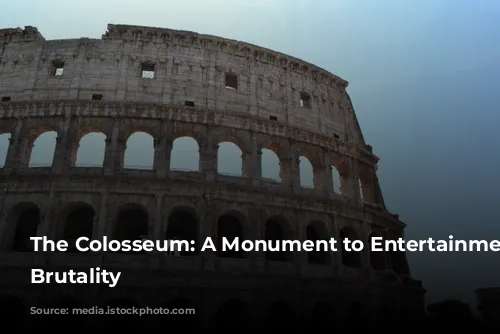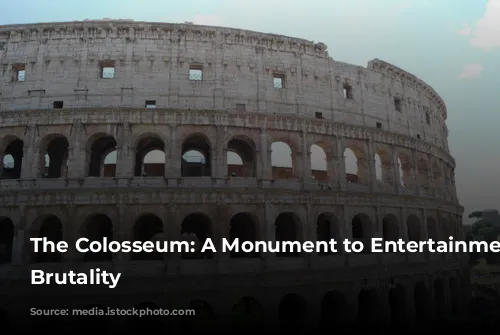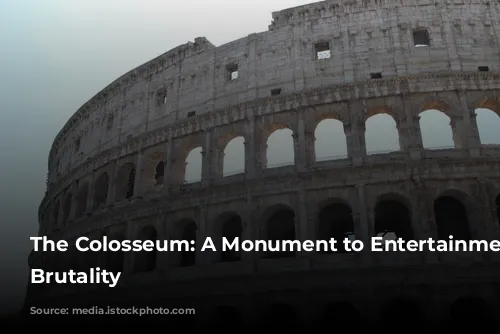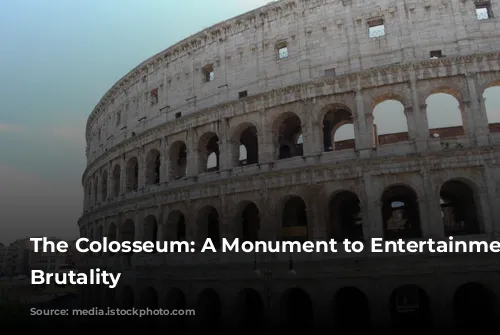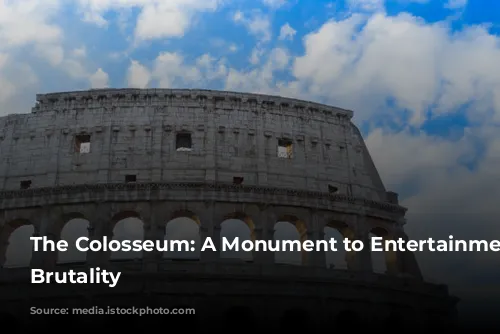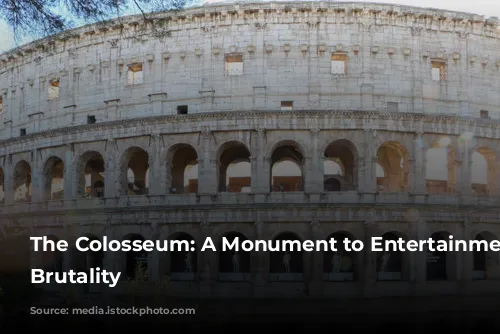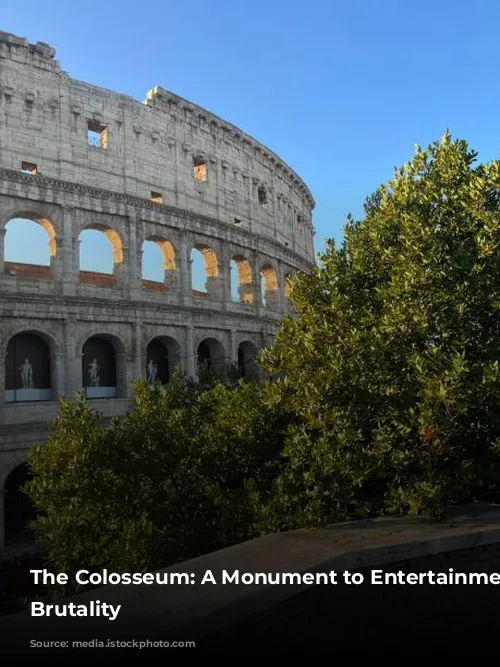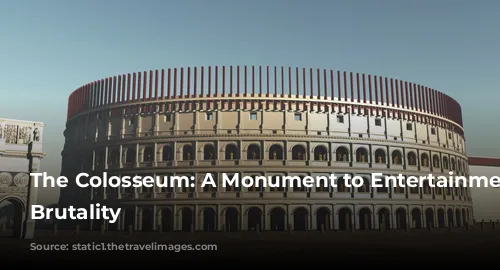The Colosseum, a monumental structure that stands as a symbol of Ancient Rome’s grandeur, has captivated visitors for centuries. It wasn’t always a ruin like it is today; the Flavian Amphitheater was built to be the centerpiece of Rome, attracting crowds to witness its awe-inspiring spectacles.
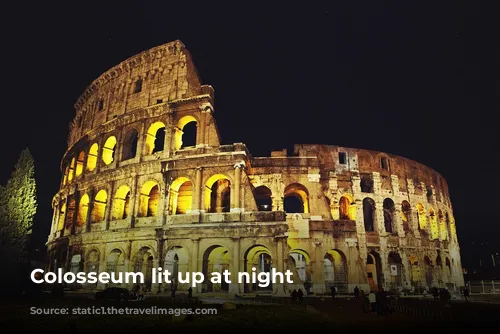
A Legacy of Emperors and Engineering Marvels
The Colosseum was a monumental project, built by the Flavian emperors Vespasian and Titus, with Domitian adding his own touches later. Its enormous size made it the largest amphitheater in the ancient world, showcasing Roman ingenuity. The Colosseum boasts an impressive hypogeum, a complex network of underground passages, and stunning architecture.
Secrets Beneath the Arena: The Hypogeum’s Purpose
The hypogeum is a fascinating aspect of the Colosseum, captivating movie audiences in films like “Gladiator.” The multi-level underground area housed cages, passages, and mechanisms for staging spectacular shows. Domitian added the hypogeum after the initial construction, signifying a shift in the Colosseum’s purpose.
Initially, the Colosseum was designed for mock naval battles, with the arena being flooded to create an artificial lake. This plan proved impractical, leading to a restructuring of the Colosseum’s role. The hypogeum became a storage area and a way to facilitate the shows held in the arena. The underground tunnels allowed the emperor and Vestal Virgins to access their seats without mingling with the crowds.

A Stage for Blood and Spectacle
The Colosseum was a arena of brutality, where the Romans indulged in their love of blood sports. The movie “Gladiator” only hints at the true scale of the violence that occurred within its walls. Animal hunts, executions, re-enactments of famous battles, and other public spectacles were common occurrences. The Colosseum was a stage for the Romans to showcase their power and entertainment preferences, which often involved brutal displays of violence.
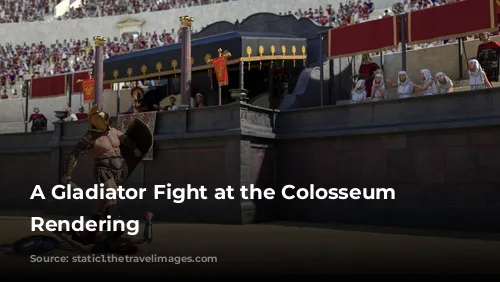
The Colossus of Nero: A Colossal Legacy
The Colosseum’s name is believed to derive from the Colossus of Nero, a massive statue erected outside the amphitheater. This statue, a colossus exceeding the size of a human, stood tall, mimicking the Colossus of Rhodes, one of the Seven Wonders of the Ancient World. Originally located at Nero’s Domus Aurea, the bronze statue was later moved to the Colosseum, standing at a towering 98 feet (30 meters) tall.
The Colossus of Nero disappeared from records in the late 4th century AD, but may have survived until the 7th century. Today, only the foundation blocks of its marble pedestal remain. The statue serves as a reminder of Nero’s reign and the grandeur of Roman architecture.
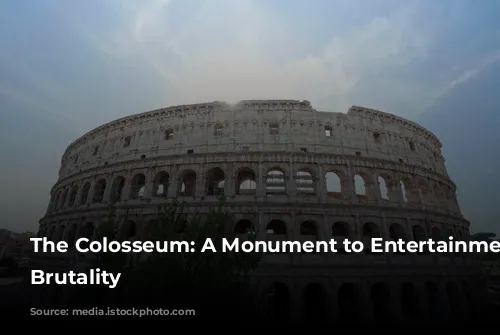
Seating for a Society Divided: The Colosseum’s Crowd Control
The Colosseum, the largest amphitheater of its time, provided seating for a vast audience. Spectators were protected from the elements by a retractable awning called the velarium, which covered two-thirds of the arena and provided shade and cooling breezes. This innovative engineering feat, depicted briefly in “Gladiator,” highlights the Roman’s ingenuity and attention to detail.
Ancient Rome was a strictly stratified society, and the Colosseum reflected this social hierarchy. The best seats, closest to the arena, were reserved for the elite, while the upper tiers were for the lower classes. The very poor, enslaved people, and women occupied the highest and most uncomfortable seats, often forced to stand or use makeshift wooden benches. Certain professions, such as gravediggers, actors, and former gladiators, were banned from the amphitheater, highlighting the rigid social structures of Roman society.
The Colosseum, with its average capacity of 65,000, relied on a sophisticated system of crowd control. Eighty ground-level entrances, numbered for easy access, were strategically designed to accommodate the massive crowds. Spectators received numbered tickets, directing them to their designated sections and rows, ensuring a smooth and efficient flow of attendees.
The Colosseum, a monument to Roman power and spectacle, stands as a reminder of a bygone era. It captures the essence of ancient Roman life, showcasing their architectural ingenuity, love for entertainment, and the stark realities of a society divided by social hierarchies. The Colosseum remains a powerful symbol of Rome’s grandeur, drawing millions of visitors each year, eager to witness its magnificence and delve into the stories of its past.

